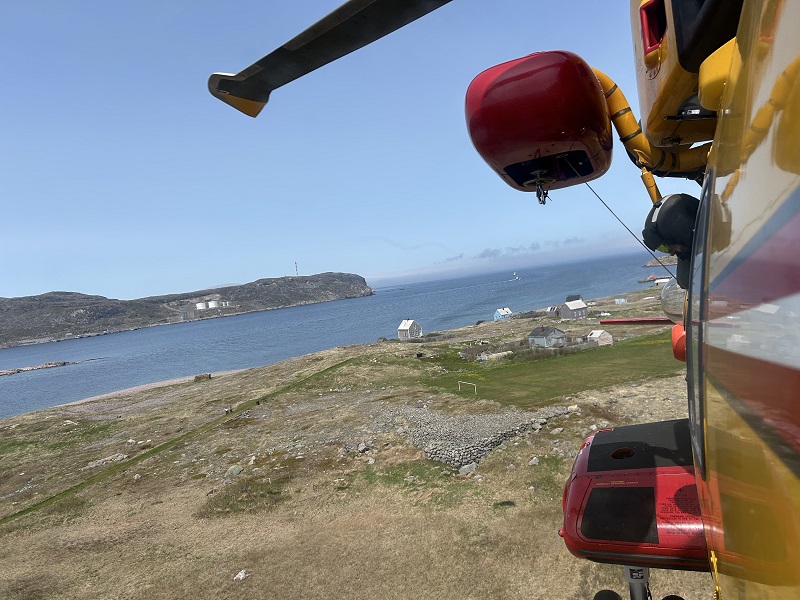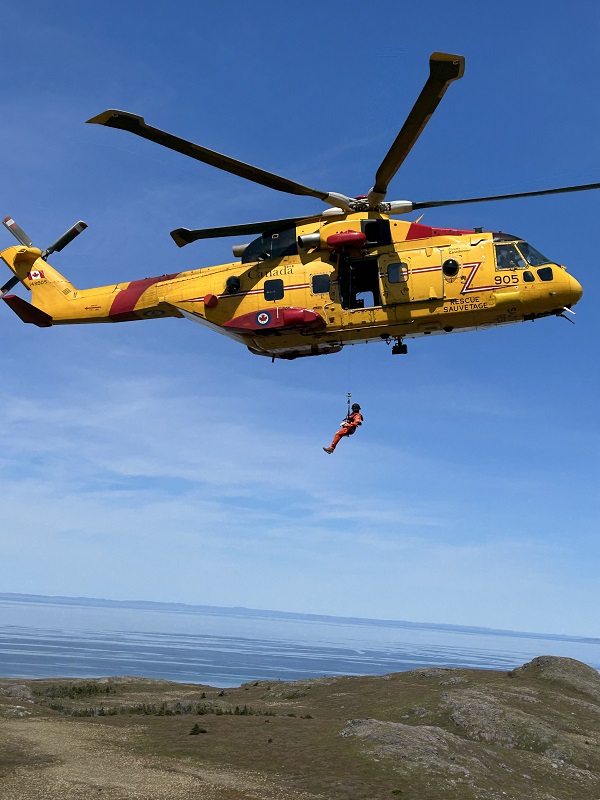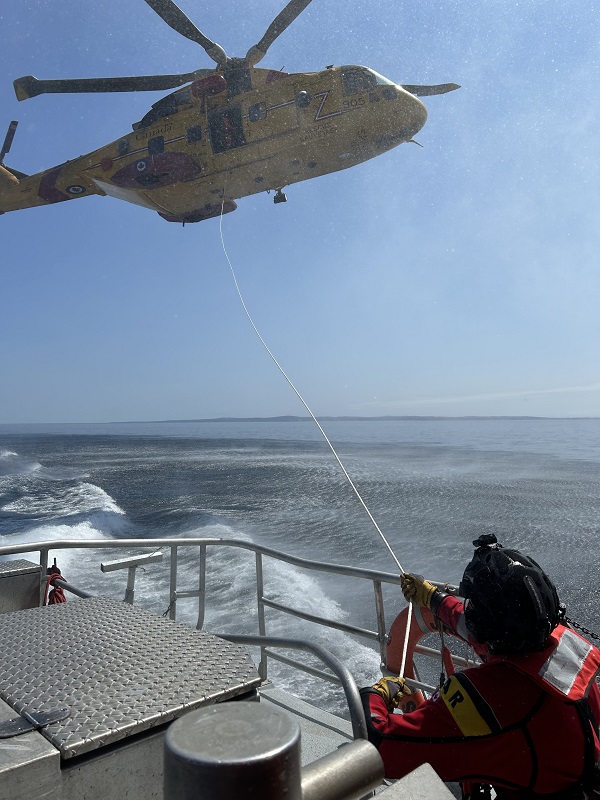Exercise TRITON strengthens Canada–France search and rescue cooperation in Saint-Pierre and Miquelon
June 30, 2025 – Royal Canadian Air Force
Captain Meagan Duncan, 1 Canadian Air Division public affairs

Caption
Flight engineer Corporal Cody Osmond prepares to conduct hoisting operations onboard the CH-149 Cormorant over Île aux Marins, Saint-Pierre-et-Miquelon, France, June 3, 2025.
From June 3 to 6, 2025, members of 103 Search and Rescue Squadron, 9 Wing Gander, joined French search and rescue (SAR) partners in Saint-Pierre and Miquelon for Exercise TRITON — a multi-day bilateral exercise that showcased operational excellence and strengthened interoperability between Canada and France in the shared maritime region of the North Atlantic off Newfoundland’s coast.
Flying in aboard a CH-149 Cormorant helicopter, the Royal Canadian Air Force (RCAF) crew got straight to work on arrival day, conducting hoist operations on Île aux Marins with 12 local personnel from the Société Nationale de Sauvetage en Mer (SNSM) and Saint-Pierre’s fire and police departments. The exercise continued later that afternoon on the water, with hoisting from the Jeune France, a small local ferry, reinforcing maritime rescue coordination. The Cormorant crew also flew over a simulated firefighting scenario involving the exercise host, the French Navy vessel Fulmar, and a large local ferry.
Simulated Emergency Scenarios, Real-World Impact

Caption
Search and Rescue Technician Sergeant François Guertin is hoisted down from the CH-149 Cormorant at about 80 feet above the rocky mountainside of Saint-Pierre-et-Miquelon, June 4, 2025.
The second day of the exercise featured a simulated large-scale search for three persons in the water, involving crews from the RCAF, the Canadian Coast Guard, the Fulmar, and the SNSM. The RCAF Cormorant crew successfully located one individual and performed a water extraction using the onboard rescue basket, demonstrating the importance of precision and teamwork in dynamic SAR environments.
In the afternoon, the aircrew conducted a challenging rocky mountain landing, dropping off several crew members (an extra pilot, a public affairs officer, and an embedded journalist) and a SAR Tech on the mountainside. The Cormorant briefly conducted some mountain flying training, followed by a hoist operation from a hover of approximately 80 feet—another critical training opportunity for crew members to refine their technical skills over a complex terrain.
Seamless Integration on Sea and Air
Day three offered a unique experience on board Jaro II, an SNSM rescue vessel operated by local volunteers. Sailing from Saint-Pierre to Miquelon, Canadian participants observed French SAR methods firsthand and enjoyed moments of cultural connection before participating in a live hoisting drill over water. The Cormorant helicopter flew over the Fulmar before hovering 35–40 feet above Jaro II to deploy SAR technicians.
Following a quick pain au chocolat on board the Jaro II, the SAR techs hoisted three Canadian participants to the Cormorant in a display of precision and professionalism that was featured that evening on French television—a testament to the exercise’s visibility and significance.
Diplomacy and Camaraderie

Caption
Search and Rescue Technician Corporal Jared Bartlett controls the guideline from the CH-149 Cormorant while onboard the Jaro II in preparation for hoisting from the vessel on the waters of Saint-Pierre-et-Miquelon, June 5, 2025.
Exercise TRITON was not only about technical skill and interoperability, but also about building enduring SAR partnerships. After the exercise had concluded, the French Prefect of Saint-Pierre and Miquelon, Bruno André, hosted a reception at his residence to thank all participants and highlight the value of French and Canadian cooperation in maritime safety. Following the Prefect’s reception, a casual BBQ at the local Gendarmerie provided an opportunity for informal networking and camaraderie between French and Canadian SAR personnel.
A Model for Collaboration
Exercise TRITON highlighted the effectiveness of joint operations in remote and challenging maritime environments. By training together, Canada and France continue to build mutual trust, operational understanding, and the ability to respond quickly and cohesively in the face of real emergencies.
The professionalism, adaptability, and teamwork on display during Exercise TRITON are a credit to all participating forces—and a strong example of how international collaboration enhances public safety in the North Atlantic.